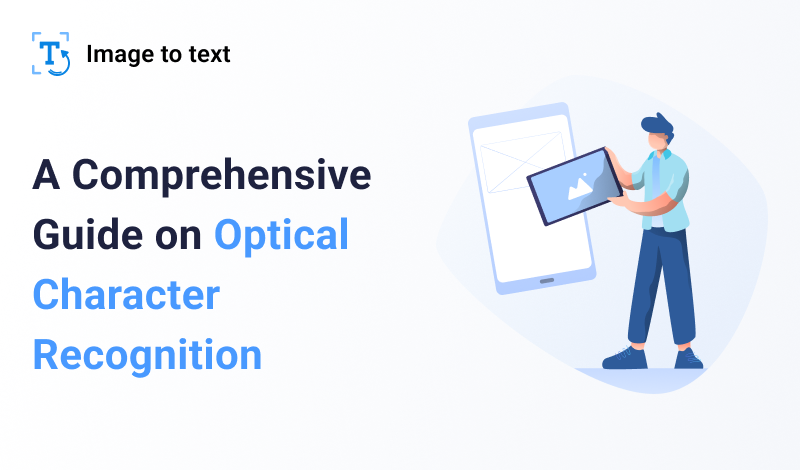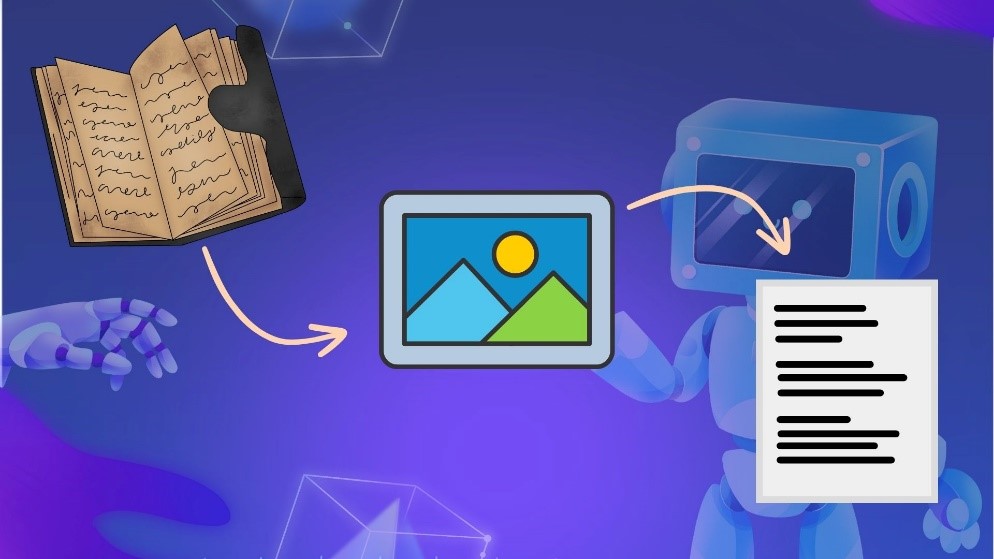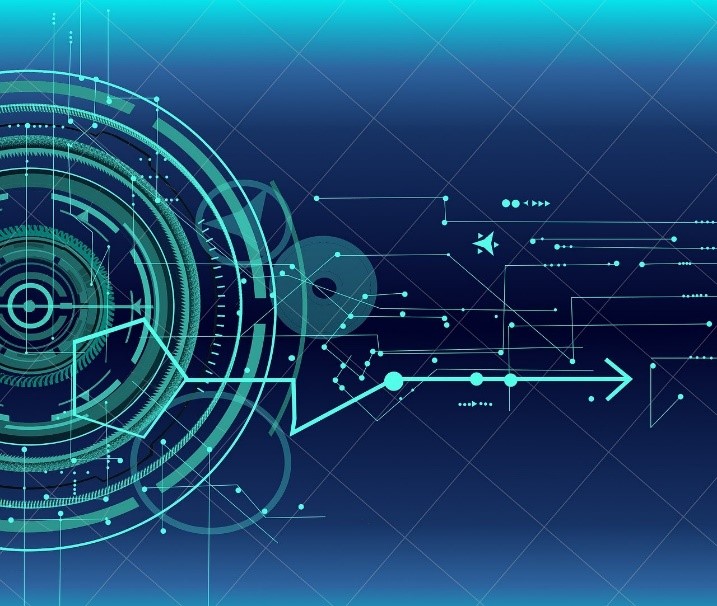


Technological advancements are occurring at an exponential rate in the current era. We look around us and find out about new technology every day. In such a cluster of advanced utilities, we often stay unaware of some very important technologies.
Optical Character Recognition is a highly innovative technology that isn’t very recent but is greatly useful. It allows users to extract information from unmodifiable file types. These files may include images with text embedded inside them.
In essence, OCR tools provide users with the option to copy text from files such as images, PDFs, scanned documents, etc. In the present visual-dependent environment, this technology plays a key role in many processes. So, this article will look deeper into it so that the significance of OCR is clear and you understand all the aspects related to it.

When learning about OCR, we first have to see how it originated. This will give us context about the technology. According to an online source, the rise of this technology began in the 1990s and early 2000s. But if we go even back in time, the founder of this technology (in a way) was Ray Kurzweil.
He developed one of the earliest forms of the current OCR, which was able to identify multiple fonts of text inside a file. This kept evolving and reached a point where OCR was able to identify not just a limited number of fonts but also handwritten text, numbers, other languages, and more.
This form of OCR is seen in various software and online tools. These tools help users to copy text from images of their choice. The process has become extremely streamlined, and most of these services are available for free.

Moving forward, we will now see how OCR is able to do what it does. For instance, how can the image-embedded text be converted into a machine-readable format? Different tools use different procedures, but we will discuss the general version of it.
Here is a list of steps that take place in a functioning OCR:
First, the image uploaded into the tool is processed for recognition. This means that it is prepared to be analyzed by the tool or software. There can be multiple ways to do this. For example, a tool might increase the contrast of the image to make the text clearer and easier to understand. This is known as pre-processing.
After the processing is done, the text characters inside the image are partitioned. This allows the tool to process characters separately and more accurately.
All the text characters are compared or matched with the characters in the database of the tool. For example, if there is an alphabet A in the image, the tool will compare it with all the alphabets in its database until it finds a match.
Such a personalized approach to conversion makes OCR highly accurate and dependable.
This step occurs in tools that show results in the form of text. After the comparison, the closest matches to characters are presented to the user in the form of editable text. This allows users to manipulate the text as they like.
This is where the work of OCR ends in most cases. Some tools like Google Lens take this to the next level, where they search the internet for the recognized text. For example, if you put a document with information about dogs into this software, it will show you similar documents online.
We learned the backend workings of OCR. But now, we will see how this OCR can be used practically. As mentioned earlier, OCR comes in different forms. We will look at some of the major ones and explain how you can use them.
Online OCR tools are utilities available on the internet that are used for the conversion of images into text. Such tools are extremely easy to use. A recommended tool in this regard is Image to Text. Its functioning is explained in the following.
Following these simple steps gets your work done in just a few seconds. The advanced OCR in the tool, along with quick service, also makes sure that the extraction is accurate.
Adobe Acrobat is a PDF editor. Just like an image, PDFs can also not be edited. This software provides services for that. To use OCR in this, go through the following steps:
This software also uses OCR for PDF editing. However, it is limited to PDF files only.
OneNote is a notetaking app by Microsoft. Inside these notes, you can also add images. If these additional images have text inside them, you can use the built-in OCR to copy text from it. Here is how this can be done:
In this way, you can use OCR using a Microsoft application.
There are countless industries that benefit from OCR. Here are some of the major ones. This list will give you an idea of the significance of OCR.
We hope that your visits to a hospital have been minimal, but if you’ve been to one, you might have noticed there is an abundance of paper reports. Doctors and nurses deal with a number of different lab reports, bills, and much more. With OCR, these reports can be digitalized and sent to the patients via the Internet. This enhances the efficiency of many processes.
Just like hospitals, banks also have document-intensive operations. Things like bank statements and invoices can be digitized using OCR. This way, errors in these documents can be rectified with ease. Similarly, instead of dealing with physical documents, one can use computerized files such as the ones in online banking apps.
In the education sector, OCR is used by both teachers and students. One case in which teachers might use it is in the creation of test papers. Many teachers take tests using a pen and paper. To make it more professional, you can extract text from that handwritten piece and use it in a digital file.
Similarly, students can use it to digitize their handwritten notes for faster access and better editability.
Both large-scale and starting firms utilize documents for their functioning. They have to go through processes such as sharing files, getting them signed, and much more. To increase productivity, some enterprises have switched to digital documentation, which is possible only via OCR. This way, their work becomes more streamlined and effective.
OCR technology can be utilized for research when browsing products online. Online retailers can benefit from this. If a user comes across the image of their product and searches it up (using apps like Live Text and Google Lens), the sales will boost. In this way, OCR is indirectly contributing to the
Similarly, other industries that deal with data and information can also utilize OCR for their benefit. Their use of this technology is also like the ones explained above.
In the previous section, we focused on the specific industries that are eligible to use OCR. But how exactly does this usage give them? Some of them are mentioned above, but in the coming sections, we will specify these advantages. You will notice that most of these are centered around documentation because OCR usually handles data-related tasks.
OCR-based digitization of physical documents can enhance the accessibility of those documents. To understand this, visualize a huge rack filled with paper files. Finding something specific from there, even with proper labels, can be a difficult task. On the other hand, files saved on a hard drive can be accessed in an instant. The only thing you need to do is search it up.
Another thing that OCR can help businesses with is saving physical space. Continuing with the rack of files example, you can think how much space is required for that type of storage. Old companies have a whole room or multiple rooms just for storage. However, if the same documents are made digital, they can be stored even on a cloud, which literally requires no physical space.
The security of documents is a huge concern for a lot of businesses because of some confidential content. If the documents are paper-based, then this confidential content is at great risk. It could potentially get stolen, damaged, or replaced. The chances of these things happening drop significantly after digitization. Advanced encryption techniques provide high security.
As mentioned before, neither PDFs nor images (two of the most famous formats for digital documents) allow editing of their content. However, workplaces often need to do that. There might be an error or an update that needs to be integrated into that document. With OCR, this is possible. You can edit both PDFs and image files with this.
One final thing that OCR improves regarding document management is the shareability of files. Once again, we will compare physical documents with documents generated with OCR. In the case of hard copies, sharing a file requires physical work. On the contrary, sharing a digital file requires just a few clicks on the internet.
Since optical character recognition is such a versatile platform, users often have queries about it. Though we have tried to cover them in the article, we will clarify them in this section. Here is a list of commonly asked questions regarding OCR and related tools.
There are a bunch of real-life use cases of OCR. For example, if you are in a foreign country, you can use an OCR lens to read road signs. Since OCR will allow you to get a machine-readable form of a sign through its image, you can insert it in a translator and interpret it.
An example of OCR could be any online image to text converting tool. These tools take images as input and provide the textual equivalent of those images as output.
Yes, PDF-specific OCR software is available, such as the ones discussed in the above article. One of the most prominent examples of such software is Adobe Acrobat. It is a PDF reader that also allows editing of the file.
AI and OCR are often utilized side-by-side in modern tools. In these tools, the extraction part is handled by OCR, while AI interprets the text and provides meaningful insight. This also contributes to the accuracy of results.
Yes, there are many image to text converting applications available both on Android and iOS. iOS even has a built-in OCR feature known as Live Text. The Android equivalent of this is Google Lens. Both these features/apps are based on the latest OCR models.
Just like Windows, online OCR tools can also be accessed through Mac devices. You just have to go to a web browser (like Safari) and search for them. Similarly, the Mac versions of OCR software are also available to download or purchase.
The data-driven ecosystem that the Internet and modern technology have developed these days can often be difficult to navigate. Being up-to-date with the latest technology can make your digital endeavors much easier. One such technology is OCR.
All the necessary details about this particular technology have been provided in the above passages. We urge you to understand and analyze this information. Also, try to implement these practices in your daily life to reach a level of utmost efficiency. Not just in daily life but also in professional tasks, this technology can prove to be heavily useful.